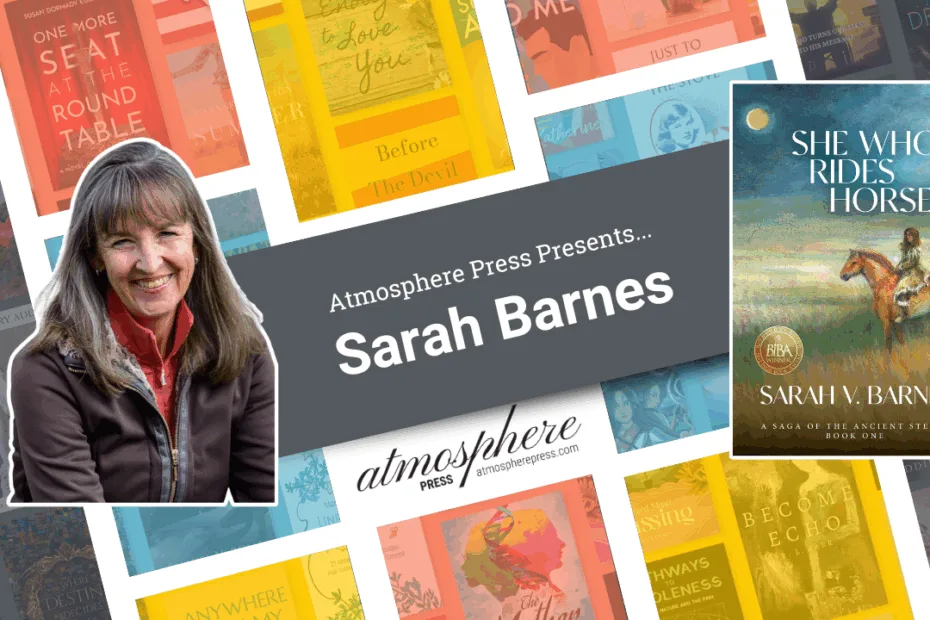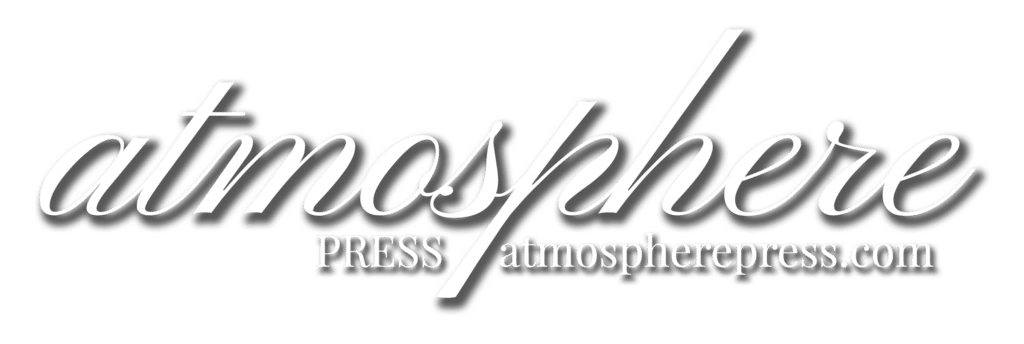An Interview with Sarah Barnes

Critically acclaimed, award-winning novelist Sarah V. Barnes is both a historian and a horsewoman. Her first novel, She Who Rides Horses: A Saga of the Ancient Steppe, received the 2022 Best Indie Book Award for Historical Fiction, among other prizes. A Clan Chief’s Daughter represents the second installment in the She Who Rides Horses trilogy. When not writing stories, Sarah practices and teaches riding as a meditative art. She also offers equine-facilitated coaching and wellness workshops. Sarah holds a PhD in history from Northwestern University and spent many years as a college professor before turning full-time to riding and writing. She has two grown daughters and lives with her husband, dogs, and horses near Boulder, CO.
Who/what made you want to write? Was there a particular person, or particular writers/works/art forms that influenced you?
I did not intend to start writing a novel. Maybe work on a blog. Maybe just enjoy the excuse to attend another magical retreat at Linda Kohanov’s Eponaquest Ranch, located at the base of the Santa Rita mountains, just south of Tucson, AZ. The setting alone is inspiring, especially if you love the desert of the Southwest as I do. Something about the clarity of the blue sky, the dry air, and the combination of rock, sand, sage brush, and mesquite.
I’ve attended several workshops at Linda’s ranch, all featuring the equine-facilitated personal growth experiences she pioneered in the wake of publishing her international best-selling memoir, The Tao of Equus. Although each workshop has a different theme, all of them incorporate activities designed to expand self-knowledge, develop social and emotional intelligence, and hone leadership skills. Linda is a gifted facilitator, but the real teachers are the horses.
This workshop focused on writing. Like me, all of the participants had been to Linda’s at least once before. As a result, none of us arrived expecting to receive nuts-and-bolts advice about crafting the perfect essay, constructing character arcs, or getting published. We knew better. What Linda and her equine partners offered was something much more elusive – access to another realm, a passageway leading to a mythic landscape between the worlds. Guided by the wisdom of the herd, we would be invited to discover the place where stories dwell, awaiting the power of a storyteller to summon them to life.
“Just write whatever comes to you,” Linda instructed.
The third day of the four-day workshop had been spent in various activities designed to help us tap into our intuition and creativity. In the round pen with the horses, we awakened our body’s wisdom and our heart’s desire. Stretched out on Linda’s living room floor, eyes closed, we listened as Linda’s mellifluous voice guided us on an imagined journey, accompanied by ethereal music composed by Linda’s Grammy-nominated husband, Steve Roach. Now, with November’s afternoon shadows beginning to lengthen and the desert air starting to cool, we had an hour or so left before disbanding for the day.
“Find a place outside,” Linda told us. “Make yourself comfortable, stay as long as the light lasts. No need to check in before you leave. We’ll reconvene in the morning and share whatever you come up with.”
Pulling up a chair at one of the tables where we’d eaten lunch earlier in the day, I opened my laptop, clicked on a new Word document, poised my fingers over the keyboard, and with no idea of what was going to come out, started to write.
The words flowed. A girl, dressed in animal hides, uncommon blue eyes scanning a distant horizon. A filly, her unusual chestnut coat as red as the girl’s own hair, lit like a flame by the rays of the setting sun. The boundless grasslands of ancient Eurasia. The first person ever to ride a horse.
The temperature dropped, darkness fell, and a huge orange moon rose behind the mountains east of the ranch. Eventually, I forced myself to stop writing long enough to drive my rental car back to the bed and breakfast where I was staying. Ensconced in my room, sitting up in bed, absent-mindedly eating a power bar, I reviewed what had appeared on the page so far – and then I kept writing, long past my usual bedtime.
By morning, I had the first chapter of She Who Rides Horses: A Tale of the Ancient Steppe. As I read it aloud to Linda and my fellow workshop participants, Linda shed tears – always a good sign. “You have to keep writing,” she urged, emphatic. “I’ve been waiting for someone to tell this story. It needs to be told.”
Stories are like that. As the writer Elizabeth Gilbert observes, “Ideas are driven by a single impulse: to be made manifest.” In her book Big Magic: Creative Living Beyond Fear, Gilbert describes being seized by the concept for a novel. All the details were there: the characters, the setting, the plot. But life circumstances got in the way, and she didn’t get around to writing it. Someone else did. Another gifted author, whom Gilbert had never met nor spoken with about her idea – someone else wrote it down, and then published the novel to universal acclaim. When Gilbert couldn’t follow through, the idea found someone else who could.
Writing She Who Rides Horses has been like the experience Elizabeth Gilbert describes, as though the idea for the story waited in some other dimension for someone to come along and open a door. That someone happened to be me. I’ll admit, the sensation has felt eerie at times, especially at the beginning, but also intriguing. For months, every time I sat down to write, I repeated the circumstances of that first afternoon at Linda’s, opening my computer and wondering ‘What’s going to happen today?’ Often, I’d include seemingly random details, only to discover three chapters later their important role in the plot. Oh, that’s why that’s in there, I’d realize. Weird.
Come to find out, lots of authors experience the same phenomenon. Stories are like that.
Eventually, I took a step back, did some research – well, lots of research to be honest – I have a PhD in history, after all, along with a lifetime spent with horses – and then I kept writing. My aim has been to keep the story of the domestication of horses as close to the evidence as possible, bearing in mind that domestication was not an event, but rather a process occurring over multiple generations. As any scholar will acknowledge, we can never fully discover the truth about the past, no matter how much evidence we accumulate or how accurate and objective we try to be. Whether answering questions about what went on five thousand years ago or just last week, all we can hope is to tell a story that’s as honest as possible, given the facts available, and thereby give meaning to our experience.
This applies to writers of historical fiction as well as to historians, with one important distinction. As a novelist, I have permission to step into the gap between what actually happened and what we can know about what happened. That gap is where imagination lives. It’s the place where storytelling becomes a sacred privilege. The place where stories dwell.
What other professions have you worked in? What’s something about you that your readers wouldn’t know?
After earning my undergraduate degree in history, my first job was as a management consultant. That stint in the business world lasted only two years before I returned to academia to pursue a history PhD. The years that followed involved a lot of moving around to all parts of the country as well as overseas with my husband and two children. Wherever we landed, I found opportunities to teach in various college and university programs.
We moved to Colorado in 1999, and I soon found an opportunity to return to my childhood passion for horses. Before long, I was teaching riding as well as history. In 2007, I made the decision to leave academia to spend full-time at the barn with the horses. I began studying with a T’ai Chi master and through him, learned to practice and teach riding as a meditative art.
A further evolution began in 2016, when I started working with Linda Kohanov, author of The Tao of Equus. In 2020, through her Eponaquest program, I became a certified coach and instructor, offering equine-facilitated personal growth and wellness workshops. Along the way, I also earned my certification as a HeartMath practitioner, specializing in stress management. I’m more or less a perpetual student – and it all goes into the books.
Something readers wouldn’t know? I was a cheerleader in high school – captain of the squad, in fact. People who know me now would never describe me as the rah-rah type, but there ya go!
Tell us the story of your book’s title. Was it easy to find, or did it take forever?
Like the story itself, the title for each of the books just arrived one day. I generally try not to push or worry about any necessary inspiration – I’ve learned that I can trust the details to show up, as long as I’m paying attention.
What part of publishing your book made it feel real for the first time?
Definitely holding the finished paperback in my hands – so much time and care and devotion goes into bringing a story into the world, it’s amazing to behold the finished product.
If your book had a soundtrack, what are some songs that would be on it?
Definitely indigenous music and ancient instruments – flutes, drums, chanting – anything that invokes a past when humans were much more closely connected to the land and the elements.
What’s one thing you hope sticks with readers after they finish your book?
I feel a tremendous responsibility toward the tale of Naya and the red filly – the story is not mine, but has been given to me to tell. She Who Rides Horses asks us to consider how domestication – a relationship between humans and horses that transformed the world – might have begun. What were the circumstances that brought the two species, horse and human, together? What choices were made, for good or ill? How has the relationship between humans and horses, and the natural world in general, changed over the ensuing six thousand years? Are there lessons to be learned from the origins of that relationship that might point the way to a better future for horses and humans alike? If I had to boil these questions down to one thing that I hope sticks with readers, it’s to challenge themselves to undertake Naya’s task of learning to see with the eyes of her heart.
What was the most rewarding/meaningful part of publishing your book?
The most rewarding aspect has been the tremendously supportive response from readers – and not just horse people. I’m especially touched when someone who is not a horse person gets it.
What creative projects are you currently working on?
I’m currently working on the audiobooks for She Who Rides Horses and A Clan Chief’s Daughter, as well as beginning the process of writing the third book in the trilogy. Stay tuned!
Are you a writer, too? Submit your manuscript to Atmosphere Press.

Atmosphere Press is a selective hybrid publisher founded in 2015 on the principles of Honesty, Transparency, Professionalism, Kindness, and Making Your Book Awesome. Our books have won dozens of awards and sold tens of thousands of copies. If you’re interested in learning more, or seeking publication for your own work, please explore the links below.
